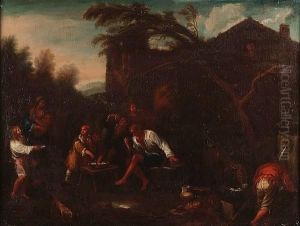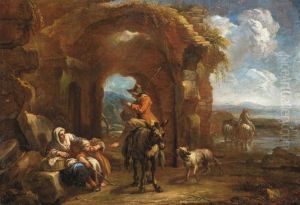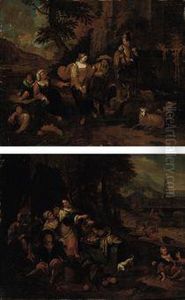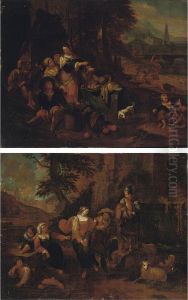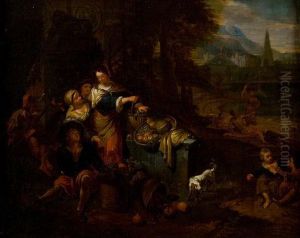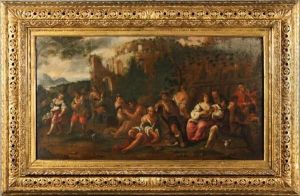Dirck Theodor Helmbrecker Paintings
Dirck Theodor Helmbrecker, born in 1633 in Haarlem, Netherlands, was a distinguished Dutch artist known for his adept skills in painting landscapes, cityscapes, and genre scenes that capture the essence of 17th-century Dutch life. Although not as widely recognized as some of his contemporaries like Rembrandt or Vermeer, Helmbrecker contributed significantly to the Dutch Golden Age of painting, a period marked by a remarkable output of high-quality artistry in a variety of genres.
Helmbrecker's early life is somewhat obscured, but it is known that he was active in Haarlem, where he likely received his artistic training. The city was a vibrant center for art and culture during this period, offering a fertile environment for his development as a painter. His work is characterized by meticulous attention to detail, a vivid portrayal of light and shadow, and a keen observation of daily life, which he rendered with a delicate and precise hand. His landscapes and cityscapes, often infused with a serene, idyllic quality, reflect the Dutch fascination with their natural and urban environments, while his genre scenes provide insightful commentary on contemporary society and customs.
Throughout his career, Helmbrecker enjoyed patronage from the Dutch elite, who sought his works for their collections, appreciating his ability to capture the tranquil beauty of the Dutch landscape and the vibrancy of its cities and towns. Despite the esteem in which he was held during his lifetime, Helmbrecker's fame did not endure as strongly as that of some of his peers, leading to a gradual obscurity after his death in 1696.
In recent years, however, there has been a renewed interest in Helmbrecker's work, with art historians and collectors alike recognizing his contributions to the Dutch Golden Age. His paintings are now prized for their historical value as well as their aesthetic qualities, offering a window into the life and times of 17th-century Netherlands. Helmbrecker's legacy, while quiet, endures as an important part of the rich tapestry of Dutch art history.
